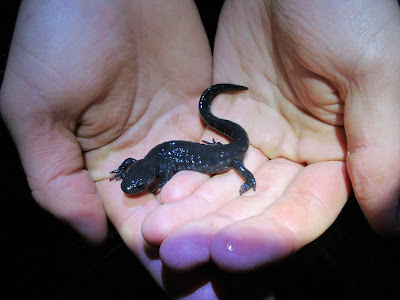On the NBC we work 10 day tours and get 4 day weekends at the end of each tour. It's a great system since it gives you plenty of time to travel and spend a couple days somewhere. This weekend more exotic travel wasn't in the cards, but Dave, Sue, and I did some local birding in the area around our field house in Yerington. There are some nice spots close by, and it was great to see a bunch of Great Basin species that were new for the season after starting out in the south.
April 21, 2016
Thursday morning we headed out to Mason Valley WMA, just 10 minutes north of the field house. It's definitely the best spot around for birds, as it contains riparian habitat along the Walker River corridor, an extensive complex of wetlands, some irrigated agricultural land as well as expanses of salt desert. The first 3 habitats indicate water, which is key to finding birdlife in Nevada. Like down at Warm Springs the surrounding deserts can be pretty desolate, but where there is water there will be birds.
On our drive in we saw a group of Mule Deer. Nevada's only deer, their big mule ears are always fun to see. They weren't too cooperative but here are a couple peeking out from behind some greaswood.
 |
| Mule Deer |
We started our morning birding by walking one of our transect routes in the riparian area along the Walker River. Two of our largest contracts on the NBC are for surveying riparian areas along the Walker and Truckee Rivers, and the willows and cottonwoods along these river systems support an incredible amount of birdlife.
 |
| Walker River riparian habitat |
Although they haven't showed up to our backyard in numbers, the wrens were back in full force along the Walker, with loads of both House and Bewick's singing from the nearby shrubs. Many species like Yellow Warbler, Song Sparrow, Tree Swallow and Brown-headed Cowbirds were common just as they are in similar habitat back home, while Ontario's Eastern Towhees and Eastern Bluebirds are replaced by Spotteds and Westerns here in Nevada. The Western Bluebirds were a particular treat, and we saw a couple pairs on our walk. They are not very common in Nevada, with Mountains being more regular across most of the state, but according to my boss Mason Valley is one of the most reliable places to get them.
 |
| Western Bluebird |
It's still a little early in the season, and some of the regular breeders such as Bullock's Oriole, Black-headed Grosbeak and Blue Grosbeaks were noticeably absent. In a week or two they'll be back, and with them the cottonwoods will be full of migrant flycatchers, vireos, and tanagers as well. As it was, a few Audubon's Warblers livened up the trees and gave us a taste of the migrants yet to come.
We had luck in the non-bird department as well. We tried flipping logs in a few spots and struck out with herps there, but we did glimpse a few Western Fence Lizards scurrying around the leaf litter (and diving under bushes to evade capture). Here's one from last year:
 |
| Western Fence Lizard |
We also had a few Desert Cottontails along the road. They're pretty similar to our Eastern Cottontails back home, but are a bit smaller and grayer with larger ears. Out here the Mountain Cottontails replace them at higher elevations.
 |
| Desert Cottontail |
After our walk along the cottonwoods we drove to the wetlands on the east side of the property to check for waterbirds. Unfortunately most of the wetland driving loop was closed for a controlled burn, but at the main pond we had Western, Clark's, Eared and Pied-billed Grebes along with many American Coots and some Gadwall and Ruddy Ducks. A few shorebirds were around as well, and in addition to the well-seen Spotted Sandpipers we had a flyby pair of Black-necked Stilts and an American Avocet, and heard the distant "pill-will-willet" of a Western Willet. Never did track down where these 3 large impressive shorebirds were feeding though. While looking for them, Marsh Wrens chattered from the cattails and some Yellow-headed Blackbirds added their obnoxiously raspy songs to those of the more familiar Red-wings.
 |
| Yellow-headed Blackbird |
Overall it was a great morning, and in a few hours we tallied over 50 species. The checklist is
here.






















